Has anyone ever asked you what your favorite dish is? For me this is like asking, “What is your favorite music?” – there is no answer. But very, very high on the list is chicken curry, and then right below it, about every other curry. Interestingly, the exact meaning of the word ‘curry’ is a bit of a conundrum.
It is widely accepted that the term curry is an adaptation of the South Indian Tamil word kaari, meaning sauce or gravy. It could also relate to the aromatic leaves of the kari plant, which are used to flavor saucy dishes, or to the technique for stir-frying vegetables in Southern India. Throughout Indian and Southeast Asian cuisine, curry is used to describe any number of saucy meat or vegetable main courses, usually eaten with rice. Their taste, consistency and ingredients vary as widely as those in the dish we know of as ‘soup’. It’s probably fair to assume that a curry is likely to be highly spiced, but subtle, delicately flavored curries abound – so qu’est-ce que c’est, curry?
The colonial British standardized on an Indian powdered spice mixture containing high proportions of turmeric, fenugreek, coriander and other spices. What is now commonly know as “curry powder” was probably a mispronunciation of the Indian word kari podi (powdered spice blend) by the British. This curry powder has a very distinctive yet recognizable flavor, but is only one of a multitude of spice mixtures, or masalas, used in Indian and Southeast Asian cuisine.
A curry can be prepared using ‘curry powder’ (which I happen to love), or using very different masalas to achieve a completely different result. Alternatively, the individual spices for a given dish can be deployed one-by-one as the dish is assembled, imparting unique flavor customized to the dish.
This is a great thing – it means there is no specific prescription; you really can’t go wrong. It’s just a good idea to start mild and build on experience. It also means that whoever tells you that they ‘hate curry’, might actually like curry – if a different masalas or mix of spices is used.
If you are really into it, you can make your own masalas from whole seeds, but there are so many great ones out there, including innumerable yellow ‘curry powders’, which have widely different characters. I try every one I can find, but I also like making my own. I dedicate one coffee grinder as a spice grinder to make this simple yellow curry powder.
Curry Powder
1 Tbsp. cumin seeds
1 Tbsp. fenugreek seeds
1 Tbsp. fennel seeds
½ Tbsp. coriander seeds
½ tsp. whole peppercorn (I like the black/green/white/red mix)
¼ tsp. red pepper flakes
1 Tbsp. ground turmeric1 tsp. ground ginger
To really bring out their flavor, toast the whole spices over moderate heat in a dry non-stick skillet for a few minutes, until the spices begin to brown a bit and start to become aromatic. Set aside to cool. Tip seeds into a cleaned coffee grinder and grind for about 10 seconds. Add the powdered spices and grind another 10 seconds, or until the mixture is homogeneous and powdery. Store in an airtight container.
Hurry Curry
A simple curry can be the ultimate fast food. Just sauté a diced onion, bell pepper and some garlic in a bit of oil until soft, about 5 minutes. Add about a pound of any kind of meat or seafood (e.g. diced chicken, shelled shrimp, cubed lamb – even ground beef!) and cook for about another 5 minutes. Add a spoon of curry powder and cook a minute or two. Add a can of diced tomatoes, maybe some chickpeas or some frozen green peas, stir well and simmer until heated through. Viola!
Foreign Influences
If you have a bit more time you can make an even richer curry, thickened with creamy ingredients like coconut milk, yogurt, mustards or pestos. Here we are stretching the boundaries of traditional curries – as if ‘traditional curries’ was not an oxymoron!
I recognize the fad nature of ‘fusion food’, but I am a real proponent of sharing flavors and techniques found across the globe. After all, what would Italian cooking be if they hadn’t adopted the North American tomato or even pasta, who some say may have come from Asia? If you travel across Southeast Asia, you experience a blended cuisine mixing masalas, soy-based sauces and local ingredients like coconut milk and fish sauce. I accept that there are regional specialties like Cassoulet from Toulouse (that my Mom would call ‘le vrait Cassoulet’), or Paella from Valencia but who says you can’t leverage the best from around the globe to formulate new and different flavors.
One of the best examples I know of global cooking is how my sister in law Caline, adds soy sauce with balsamic vinegar for her vinaigrette – it is by far one of the best vinaigrettes I have every tasted. Talk about East meets West.
So let’s try out this philosophy on curries – a flexible platform for global cooking. You’ll find below three recipes I love, each which blends ingredients from widely disparate regions – Dijon from France, pesto from Italy and sun-dried tomatoes from – well all over, I guess.
Shrimp With Curried Pesto
1 lb. large shrimp, shelled, rinsed and dried
2 cloves garlic, minced
1-inch piece fresh ginger
1 Tbsp. curry powder
¼ cup pesto
½ cup lite coconut milk
palmful (about 1/3 cup) fresh cilantro, coarsely chopped
In a large skillet, heat a bit of canola oil until smoking. Quickly add the shrimp, making sure they lay in a single layer in the skillet. Add the minced garlic and ginger, and sprinkle on the curry powder. Gently shake the pan as the shrimp cooks – do not stir. Allow the shrimp to cook about 1 minute on the first side. Using tongs, flip each shrimp over and sauté another minute, shaking the pan occasionally.
Remove the shrimp to a bowl, scraping all the garlic and ginger from the pan onto the shrimp. Return the pan to the stove and add the pesto, coconut milk and cilantro. Stir over medium heat until heated through. Return the shrimp to the pan and toss gently to reheat with the sauce. Serve with rice and lemon wedges.
 Curried Chicken with Sun-dried Tomatoes
Curried Chicken with Sun-dried Tomatoes1½ lb. boneless, skinless chicken (breast or thigh), cut into 1-inch pieces
1 onion, diced
1 red pepper, diced
1 jalapeño pepper, minced
2 cloves garlic, minced
1-inch piece of fresh ginger, minced
1 tsp cumin seeds
1 Tbsp. butter
3 Tbsp. sun-dried tomato pesto (or sun-dried tomatoes packed in oil, diced)
1 Tbsp curry powder
½ cup dry white wine
½ cup lite coconut milk
juice of ½ lime
Sauté the onion and peppers in some canola oil, until they are quite soft and starting to brown. Add the garlic, ginger and cumin seeds and continue cooking for another minute or two, until quite fragrant. Tip into a clean bowl and set aside.
Heat some canola oil in the same pan over moderately high heat and add the chicken. Cook without stirring much (or the chicken will not brown well), until one side begins to brown well. Then stir the chicken and brown the other side – a total of about 3-5 minutes. Add the curry powder and cook for another minute or two. Add the wine, and bring to a boil. Add the coconut milk, sundried tomatoes (or pesto), lime juice and return the vegetables to the chicken. Salt to taste, stir well and simmer until heated through. Serve with rice and sliced oranges.
 Tilapia with a Dijon Curry
Tilapia with a Dijon Curry1½ cups yogurt
1 Tbsp. cornstarch
1 Tbsp. Dijon mustard
1 small onion, finely diced
1 carrot, finely diced
1 jalapeño pepper, finely diced (to taste)
2 cloves garlic, minced
¼ inch slice fresh ginger, minced
1 Tbsp. curry powder
1 tsp. chili powder
2 Tbsp. butter
4 Tilapia fillets
In a bowl, whisk together the yogurt, cornstarch, Dijon mustard and a dash of salt.
In a wide non-stick skillet, sauté the onion and carrot in a bit of canola oil, just until a bit golden. Add the jalapeño, ginger and garlic, and cook another minute or two. Add the curry and chili powders and cook another minute. Tip vegetables into the yogurt mixture and stir well. Set aside.
In the same pan, sauté fish in butter over medium heat for 2-3 minutes. Salt and pepper to taste. Flip, top with the yogurt sauce. Reduce heat to low, and cook covered, another 5 minutes. Serve with rice, sliced avocados and lemons wedges.

















































































































































































































































































































































































































































































































































































































































































































































































































































































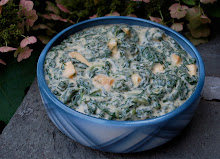

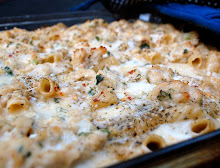
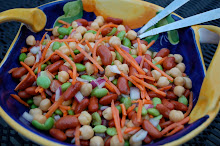
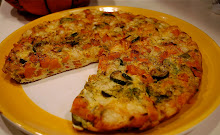
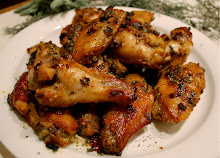

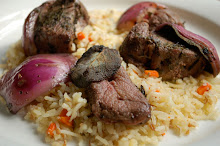
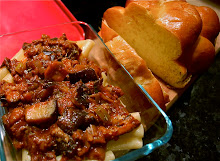
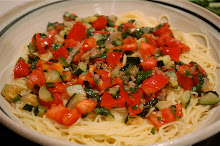
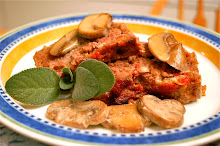
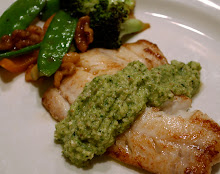
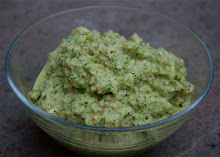
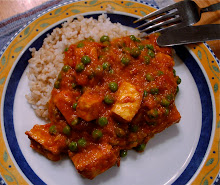
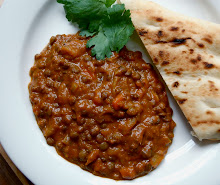
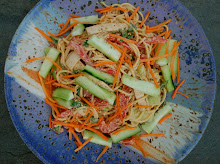
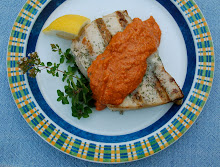
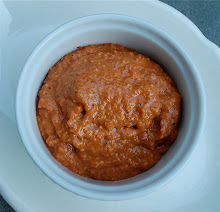
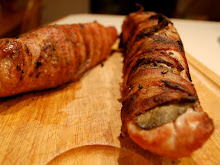
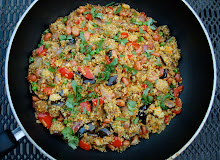

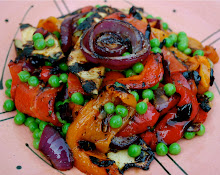
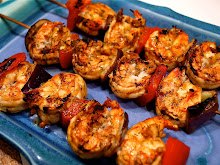
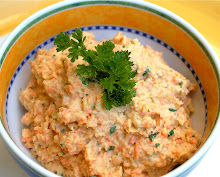
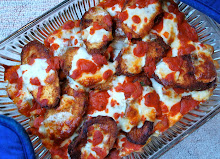
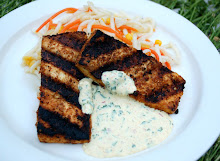
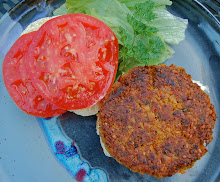
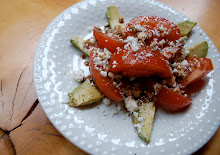

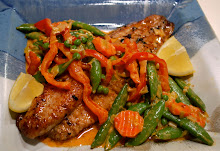
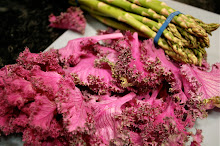
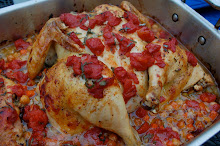
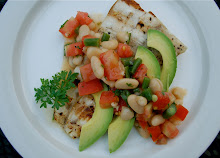

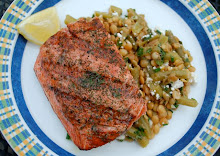
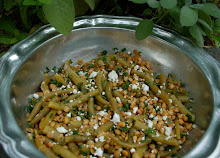

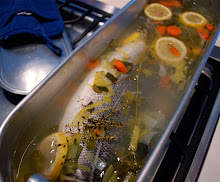
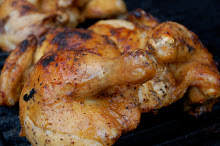
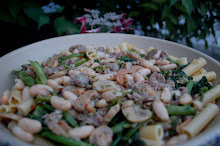
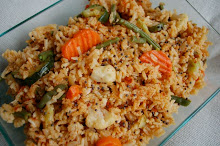
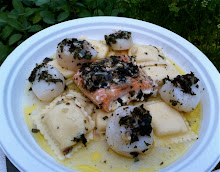
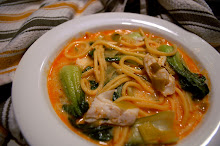
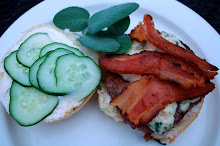
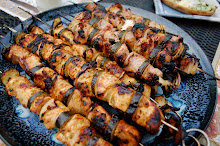
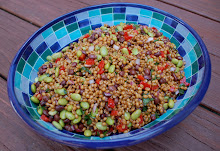
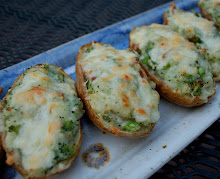
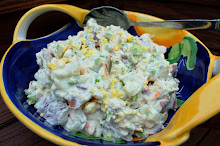
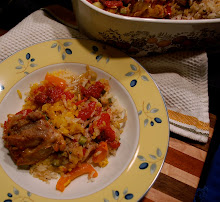
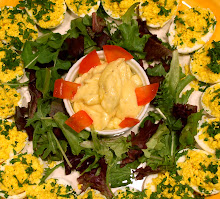
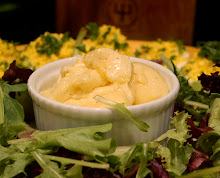
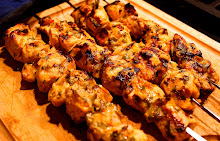
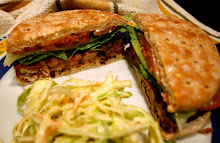
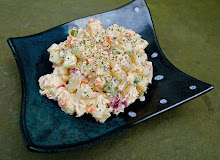
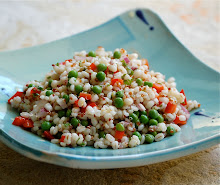
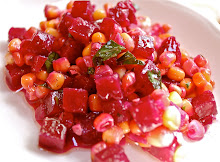
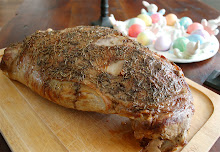
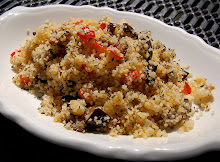
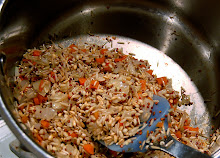
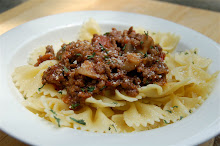
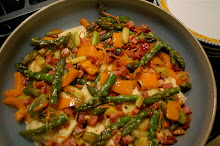
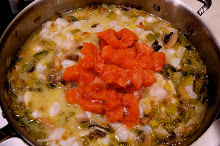
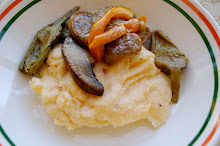
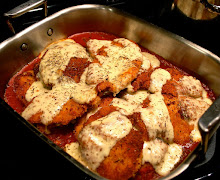
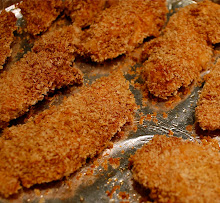
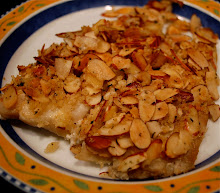
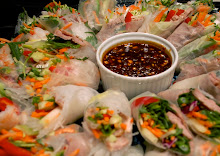
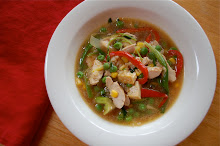
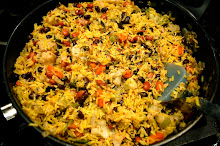
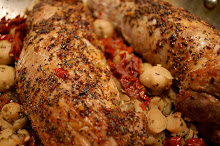
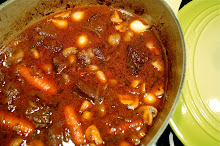
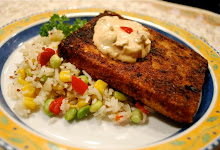
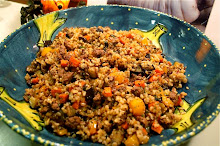
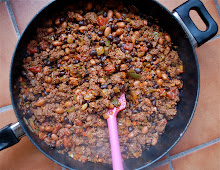
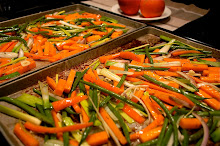
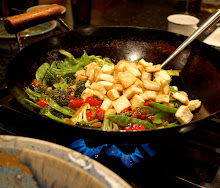
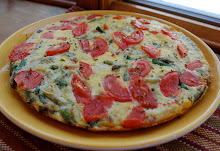
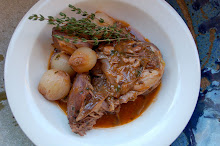
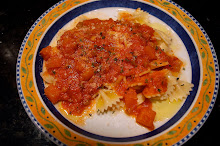
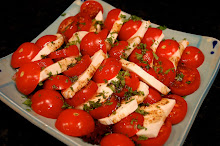
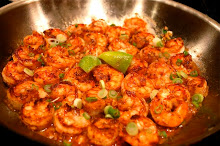
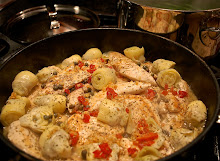
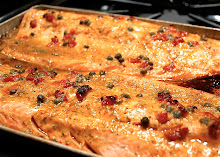
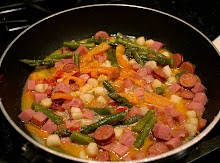

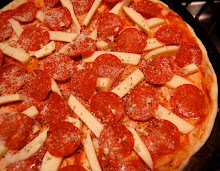
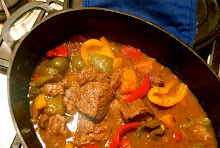
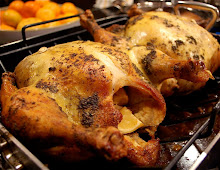
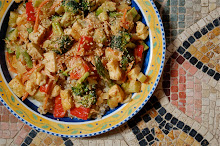
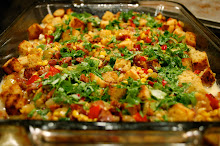
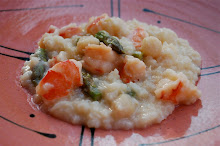
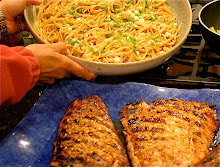
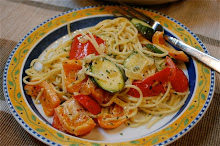
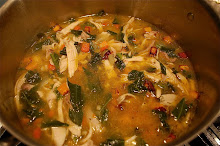

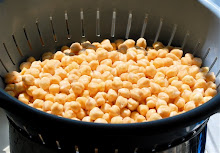
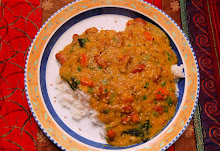
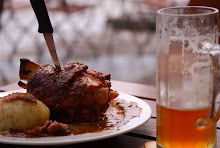
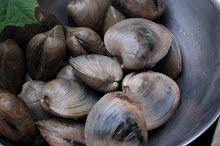
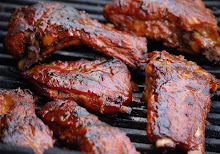
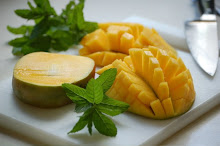
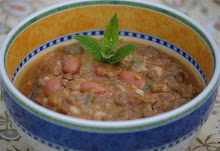
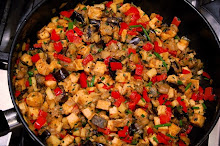
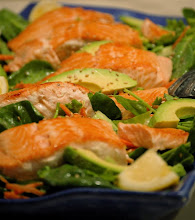

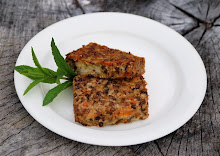

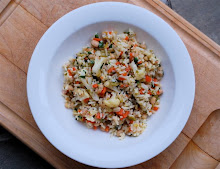


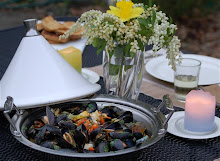
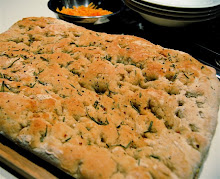
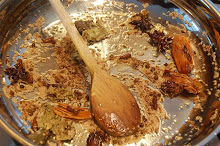
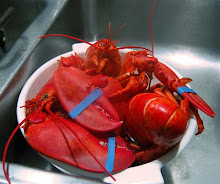
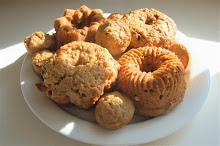
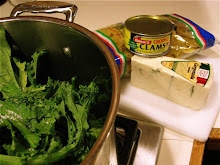
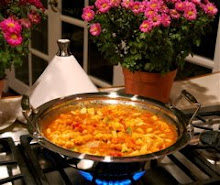
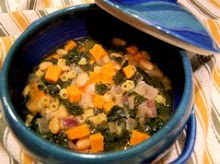
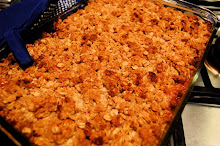
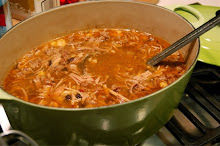
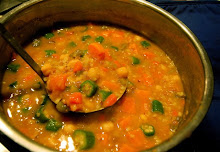
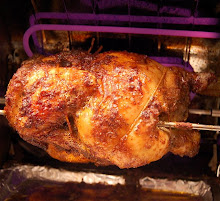
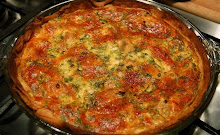
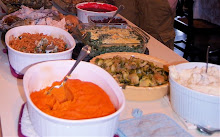
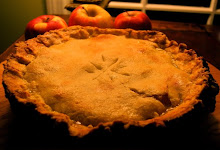
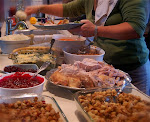
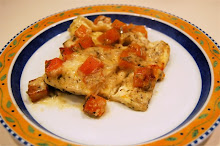

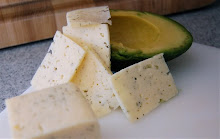
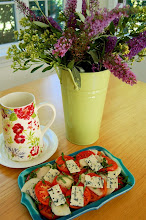
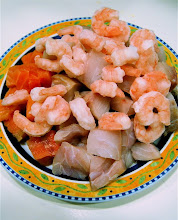
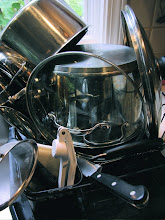
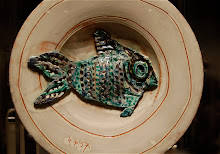
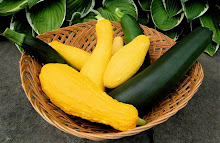


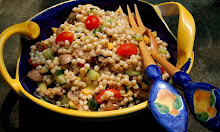

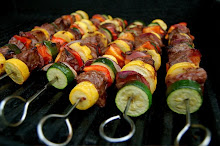

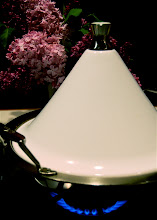
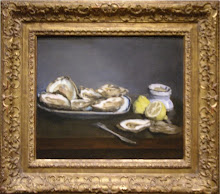
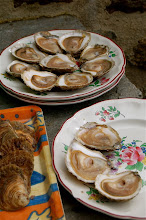


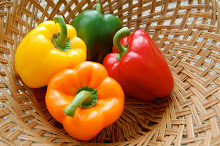

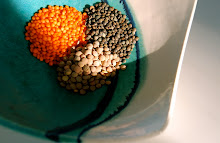

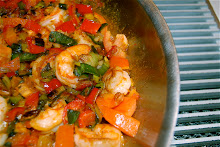
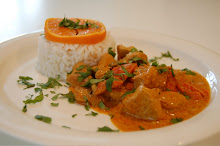
My wife and I started following Eric's "Cuisine Ici" two weeks ago and we have already made the Chicken Curry with Sun-dried Tomatoes three times! Every time we enjoy this curry we have to remind ourselves that we are at home rather than one of Toronto's finest Indian restaurants. This flavourful dish is amazing with the sun-dried tomatoes adding a wonderful twist to traditional Indian cuisine. A highly recommended entre for guests that enjoy Indian cuisine, not only for the fantastic flavours but also for the attractive presentation. Cheers!
ReplyDeletePeter Cop
Another comment on the Curried Chicken with Sun-dried tomatoes: I used regular coconut milk rather than light and found it to produce a nice rich sauce. I also assume that like me, most of us don't use coconut milk on a regular basis. So, I poured the coconut milk remaining in the can into an ice cube tray, placed it in the freezer, and then popped four cubes into individual Ziploc freezer bags for use at a later date (for my trays, four cubes equals 1/2 cup). Cheers!
ReplyDeletePeter Cop